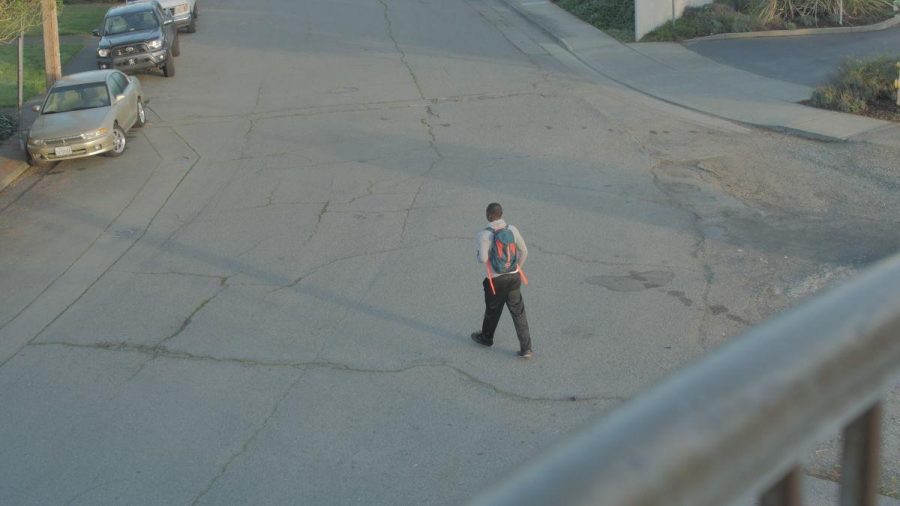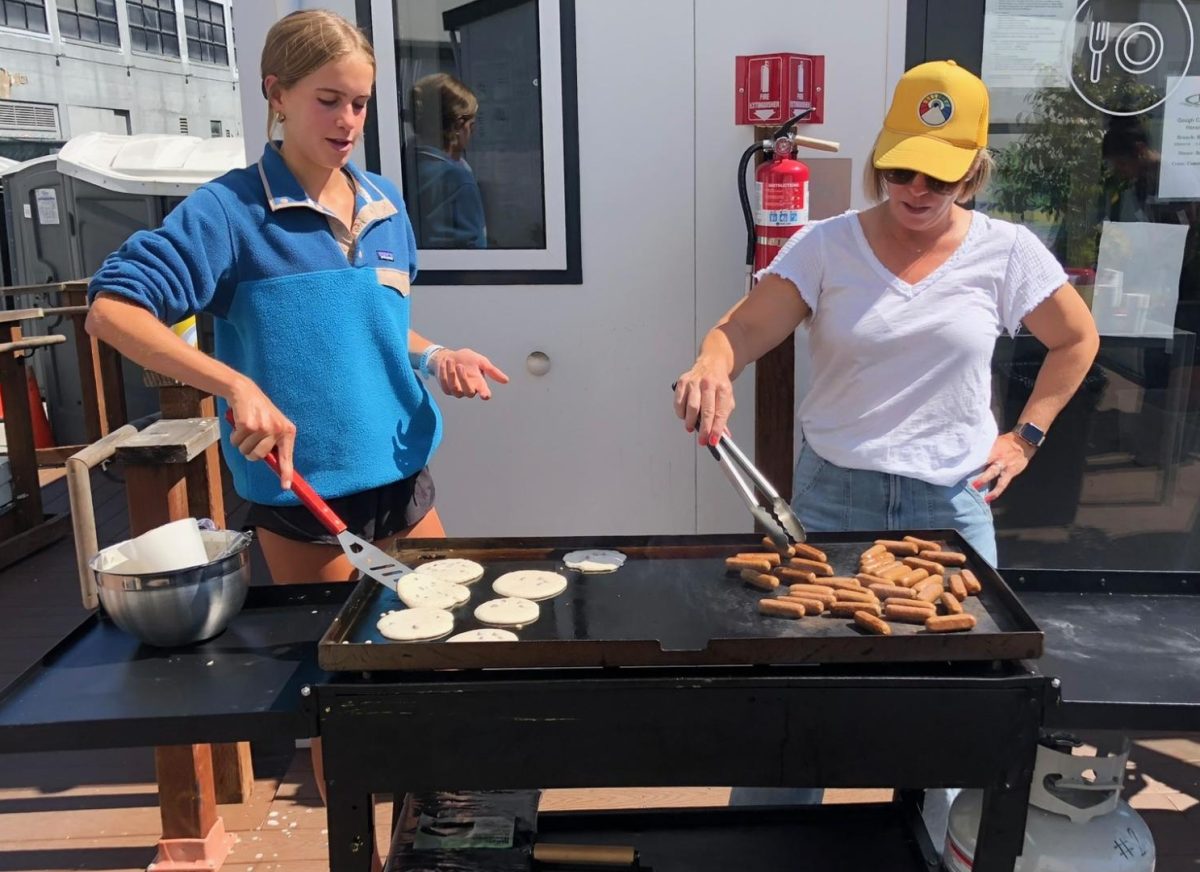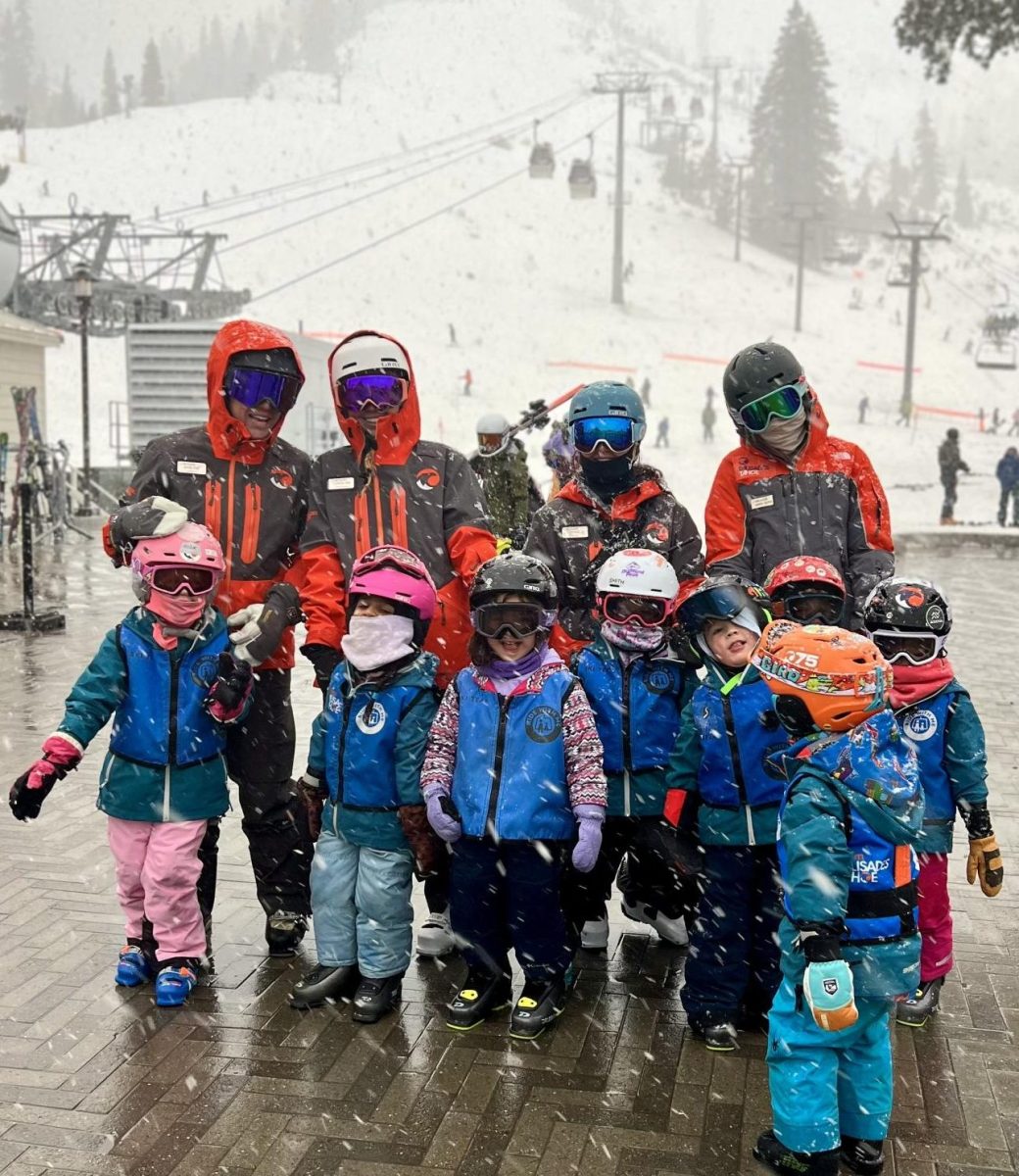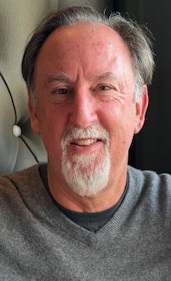Any given morning at 7:20 a.m., as one student boards her bus on Paradise Drive, another student will step off of his bus from Marin City. Both will ride on Marin Transit and both woke up earlier than they’d wish. The difference? He will walk more than a half-mile to school––she will walk a few steps. A few hundred yards away from school, the girl’s bus will drive past the walking boy. This was the common experience of Jordan Jackson, a junior who lives in Marin City and takes the bus once or twice a week.
“We see the bus that the Tiburon kids take and it passes us every day, so it’s just like we’re walking in the cold, but they get dropped off right in front of the school.” Jackson said. “For me that’s pretty isolating.”
Google Maps estimates that the walk from the northbound Lucky Drive bus pad spans 0.6 miles and takes 13 minutes.
Tam junior Jaiana Harris, who transferred from Redwood to Tam this past October, cited transportation, specifically the walk, as one of the key factors in her decision to transfer.
“When you’re walking to Redwood, the two or three Tiburon buses will be driving past,” Harris said. “It kind of burns. You could tell all the kids were looking at us—I didn’t like it.”
The Bus Ride
To use youth passes with no additional fare, students from Marin City must ride the 17 bus, which leaves the Donahue & Terners stop at 6:35 a.m. and arrives at the Lucky Drive bus pad at 7:20 a.m. If a student were to miss the 6:35 a.m. bus, the next 17 departs at 7:05 a.m. and arrives at the Lucky Dr. bus pad at 7:50 a.m., five minutes before the first bell.
Annual youth bus passes are sold for $325 through schools and enable students to ride Marin Transit without paying a fare. Certain income-qualified families can obtain free youth passes.
Jackson described the difference between taking the 6:35 a.m and the 7:05 a.m. route as either “wake up really early and be on time,” or “get the right amount of sleep and be late.”
Due to the timing of the 17 route, many Marin City students typically gravitate toward the 70 route, a direct commuter route run by Golden Gate Transit, which does not accept youth passes and charges a $1 fare. The 70 departs from Donahue & Terners at 7:30 a.m. and arrives on Lucky Dr. around 7:45 a.m.
In the 2014-2015 school year, the Larkspur-Corte Madera Elementary School District distributed 322 youth bus passes, 42 percent of which were free. The Sausalito-Marin City Elementary School District distributed 254 passes, all of which were free.
Students said that the walk was more unpleasant when it rained. With a wet season that lasts from November through March, Marin typically sees 52.65 inches of rain per year, according to Marin Municipal Water District.
“It was to the point where we didn’t even want to come to school when it was raining because we would have had to catch the bus, and our parents worked so it’s not like we could get a ride,” Harris said. “So when it would rain, most of us who needed to catch the bus didn’t go to school. When it rained, we didn’t have to walk all the way to school in the rain.”
The Band-Aid
The Marin City transportation issue has not gone unnoticed. Assistant Principal LaSandra White spearheaded a system that began earlier this school year to improve the commute for Marin City students.
“We figured out a system where whatever bus they take from Marin City they’d get off near the old Denny’s at the freeway stop, so they could get on one of the buses coming from Tiburon. One of the Tiburon buses would then, if they were able to time it right, come and stop there and pick them up. It wouldn’t cost more money,” White said. “I set it up late last spring and we had it all set up for the beginning of the school year.”
Despite never participating in White’s system, Jackson learned about others’ experiences with it.
“It didn’t work. I never tried it, but I know some girls who did, and one day the bus came to pick them up, but the bus was already too full and so the bus driver said they couldn’t get on,” Jackson said. “The girls were late to school because they had to call Ms. White to come pick them up from the bus stop.”
Aside from logistical obstacles, students often had a hard time getting a seat on the Tiburon bus. White witnessed it for herself when she chaperoned students one time.
“Even for me it was awkward. It was like, ‘Why are we picking up these people on the side of the freeway and they’re all Black?’ The bus was really crowded,” White said.
The system fizzled out in under a month, according to White, who described it as “too clunky and too cumbersome.”
“It was really awkward because when we got on the second bus, it’s all the White kids from Tiburon,” Harris said. “And sometimes the bus wouldn’t even stop so we just gave up on that, and shortly after that I transferred.”
After White’s initial plan, students from Marin City reverted back to their usual walk to school. There has been no effort from the school or district to move forward, according to White.
“Obviously we are always open to looking at how to help those kids because we don’t want to see more and more leave here,” White said.
The Transfer
At least five Marin City students from Redwood have transferred to Tam within the last year. Some have cited transportation as a factor in their decision to transfer.
“I know for sure that some of the kids who recently transferred from Redwood to Tam just within this school year cite transportation as one of the biggest reasons for transferring because they felt like they had to get up much earlier than all their peers to get to school and let alone walk,” White said.
While most eighth graders living in Marin City typically choose to attend Tam High, the school in their zoning area, students are able pick between Tam, Drake or Redwood. TUHSD’s open enrollment policy enables any student who attends any middle school in the Mill Valley, Sausalito-Marin City, Ross Valley, Kentfield, Larkspur Corte Madera, or Reed Union districts to attend the school of choice.
The district’s open enrollment policy doesn’t require students to attend the school to which they are zoned, but Assistant Superintendent Sally Swan thinks that zoning complicates the situation.
“It’s difficult because our schools are established to serve the students in the communities where they exist. It’s nice to give students the option to go to a different school from where they’re residing,” Swan said. “How far we go out of our way to provide transportation for that student to go to a school that’s other than where their residence is served, is a difficult question.”
The Tiburon Buses
The 119 from Tiburon and the 113 from East Corte Madera, routes most bus-riding students take to school, are “tripper routes” for Redwood. Tripper service is a school bus service run by a public transportation company––it’s coordinated with the school’s bell schedule, but regulated to stop at only public bus signs and remaining open to the general public. Marin Transit runs the tripper routes independently from TUHSD as part of its regular scheduled service. There is no contract between Marin Transit and TUHSD, but Marin Transit coordinates with schools to provide the service.
“[The schools] give us the bell times and we adjust the routes and the schedule of the routes according to that information,” said Holly Lundgren, administrative analyst at Marin Transit.
The only transportation TUHSD provides is a charter service for 24 students who live in Bolinas and Stinson Beach and attend Tam. The district will spend $80,000 this school year, according to Swan, to contract with a private yellow bus company. Bolinas and Stinson Beach are part of Tam’s zone.
The Walk
Under the current system, it is more difficult for Marin City students to participate in extracurricular activities at Redwood.
“I’ve been here for 20 years, I grew up in Marin City, so I know all these kids but I find that [the bus] discourages them from participating or even wanting to participate in extracurriculars,” White said. “If you’re here for practice until dark and if you don’t have a ride home, you might not want to or feel safe walking to the bus stop.”
The Marin City transportation situation continually comes up in district meetings about equity, according to White.
Harris said she and her friends from Marin City often talked about the walk from the bus stop when she attended Redwood.
“We used to complain about it a lot amongst each other. Kids always talk about it––having to walk,” Harris said. “[They’d say] that they’re tired of doing it, that we should have a bus that drops us off in the parking lot. Why do the White kids get a bus when we don’t have one?”













